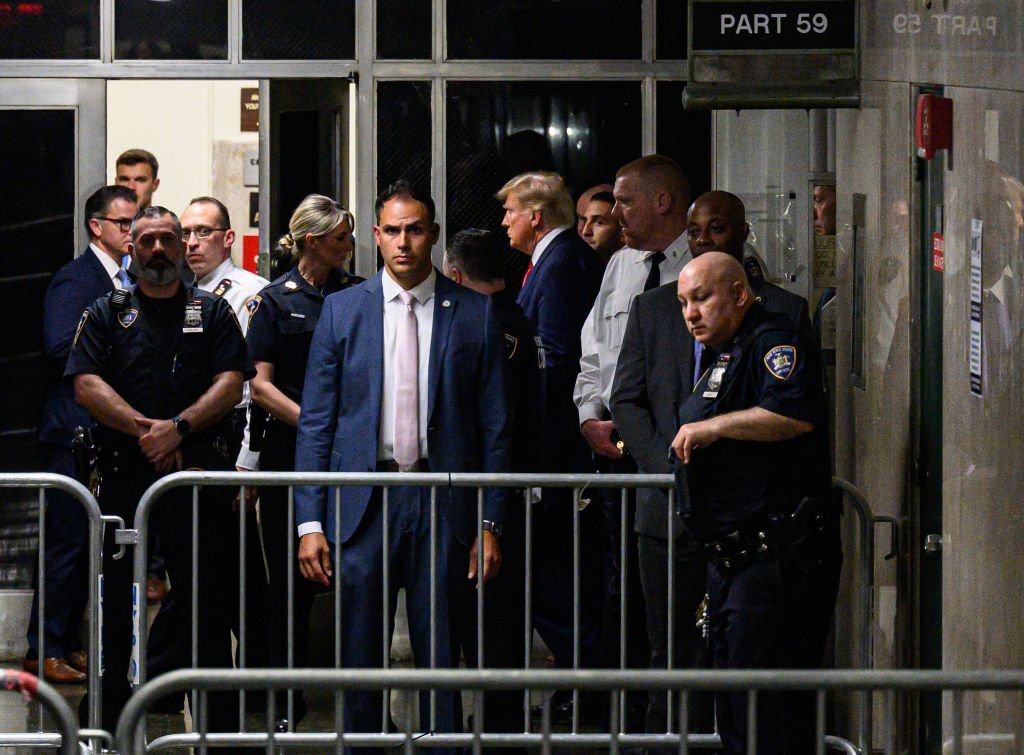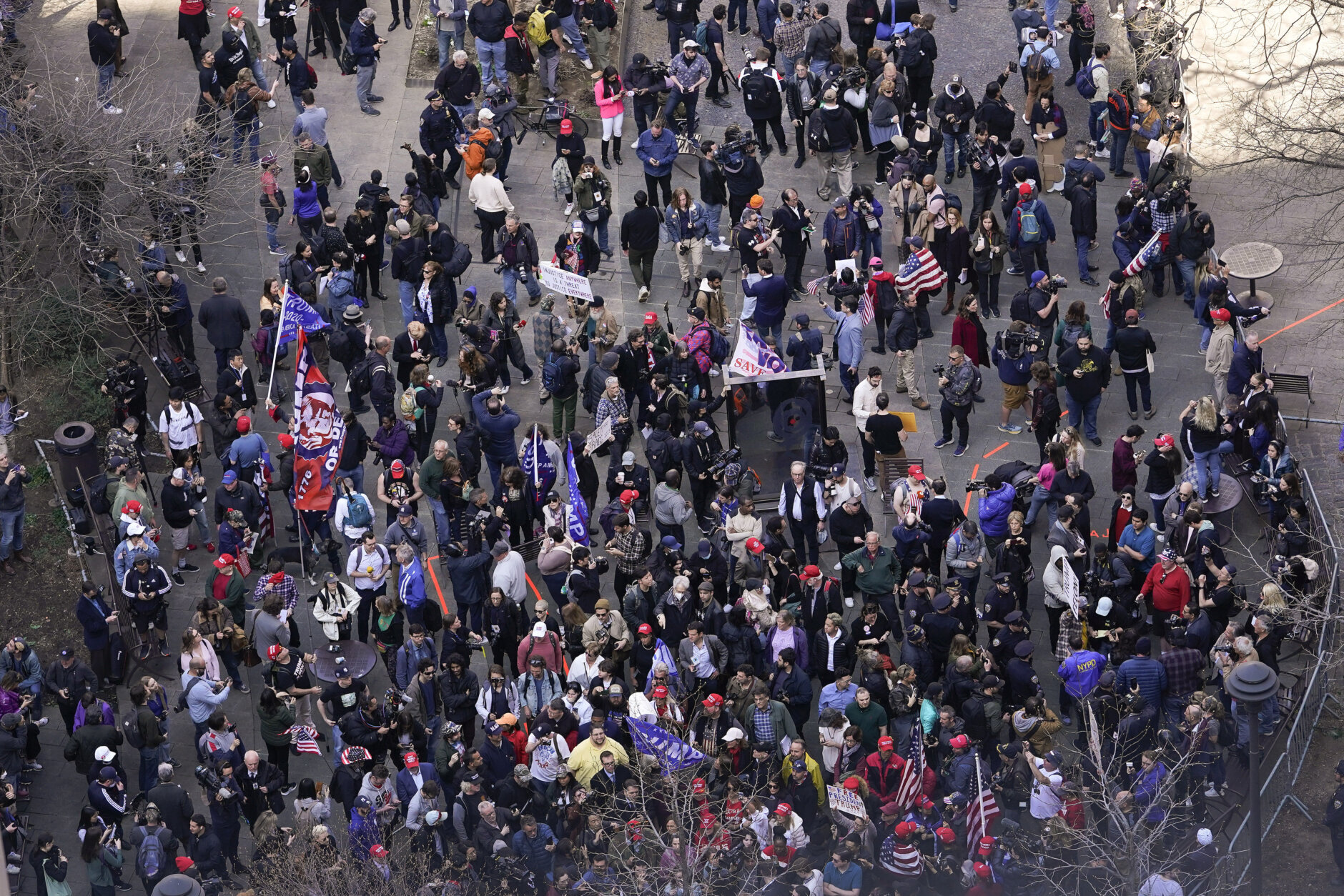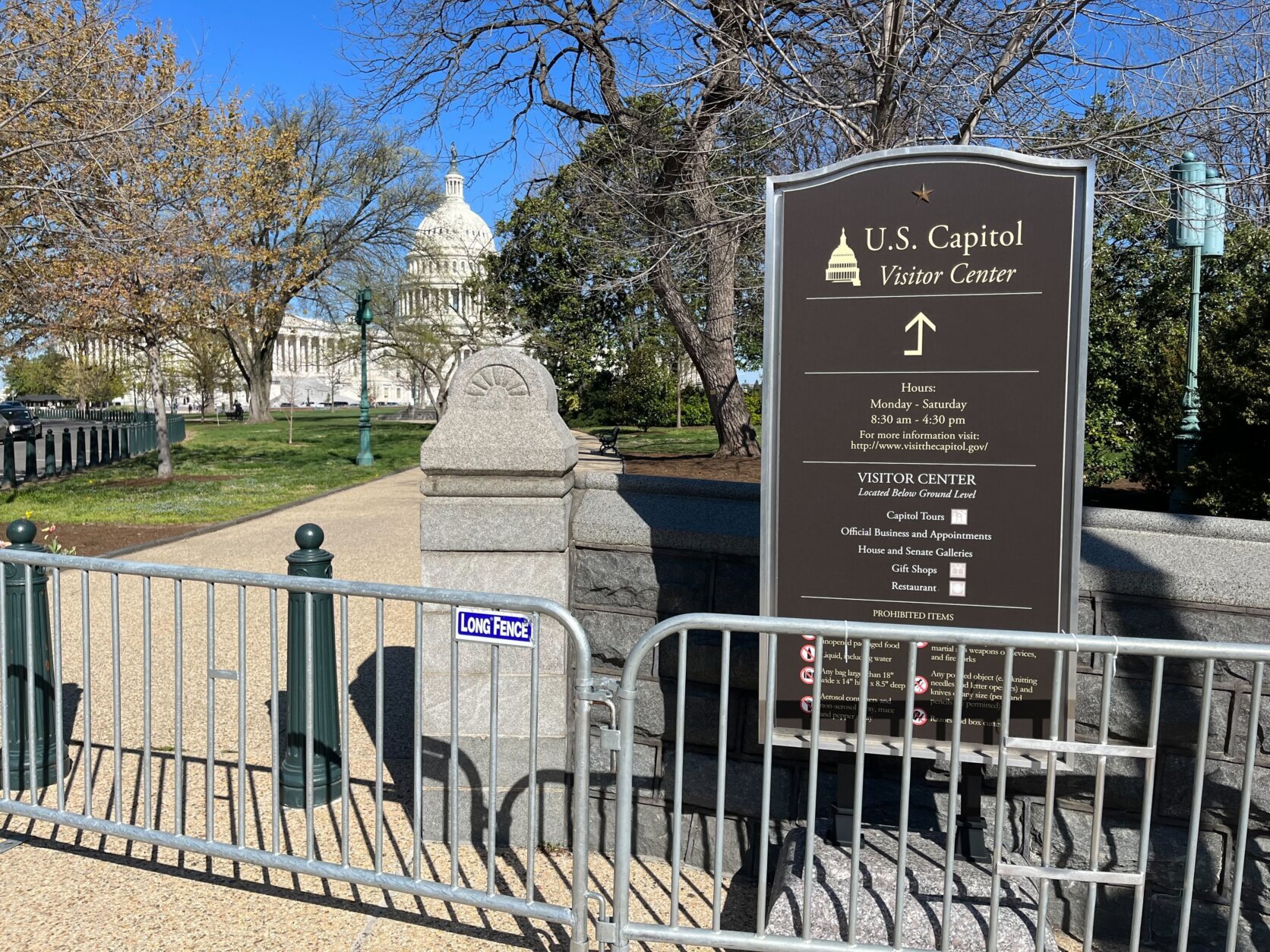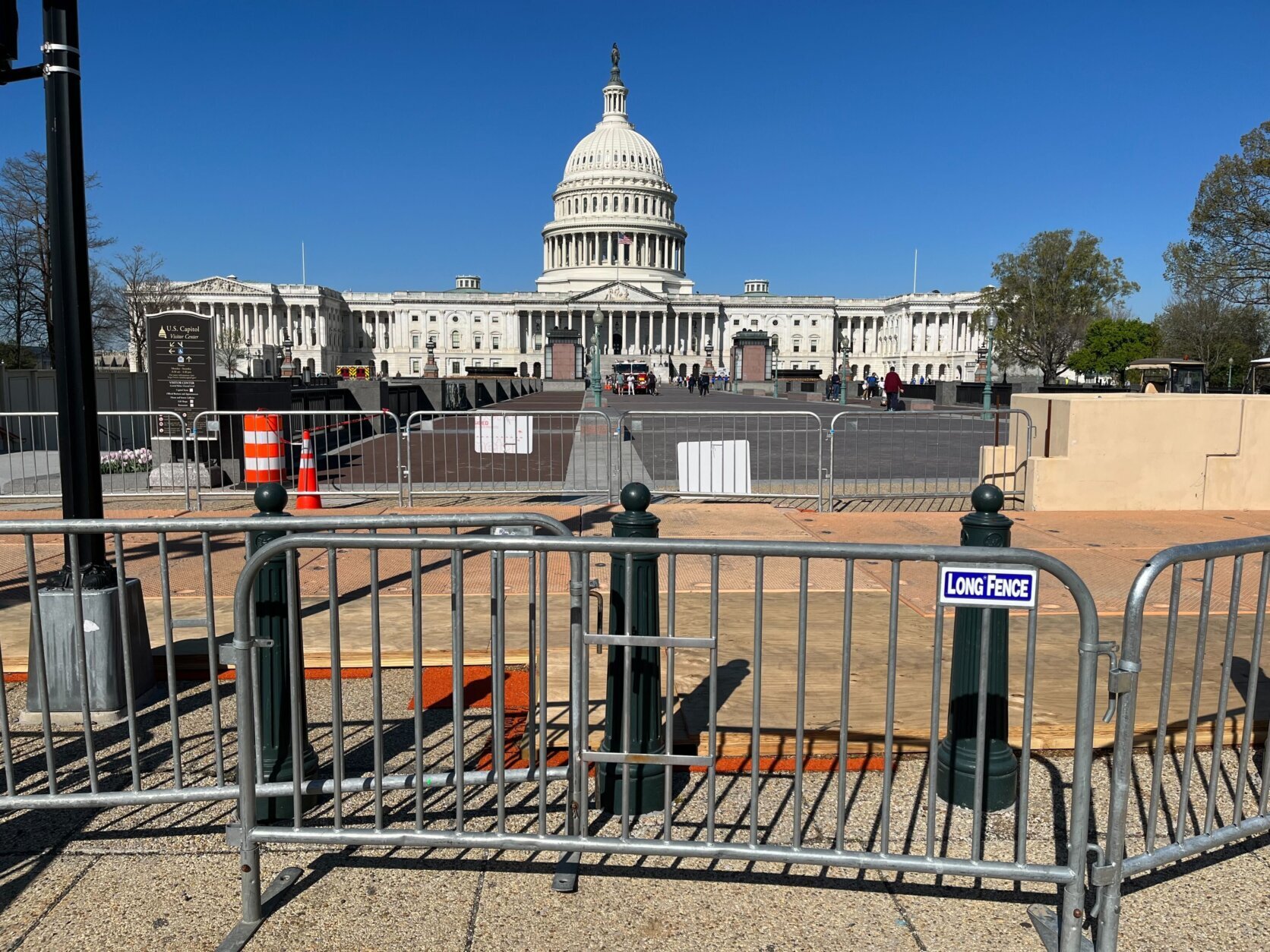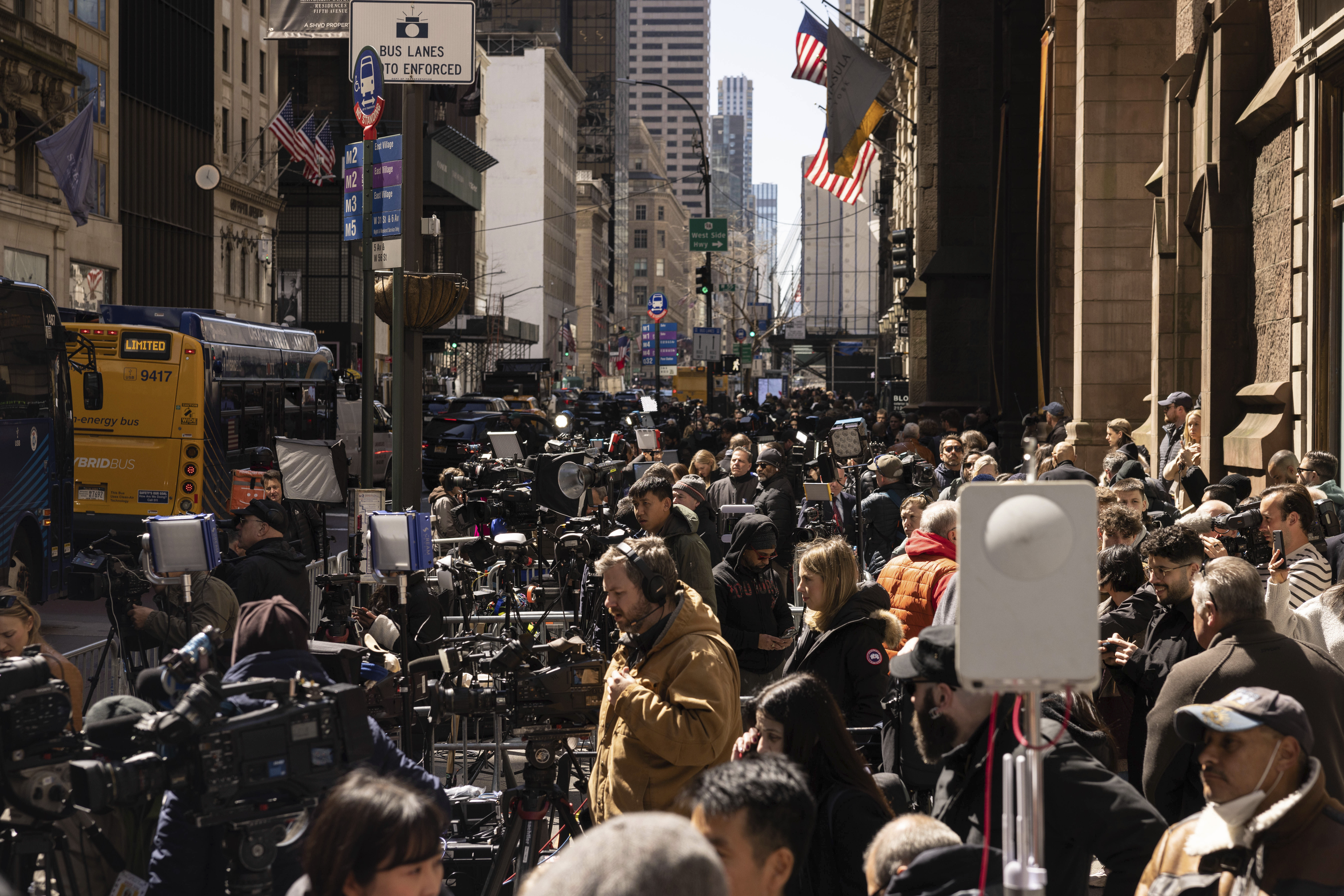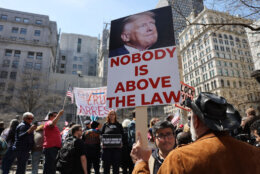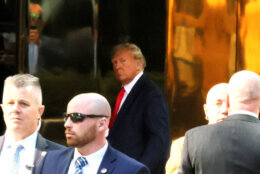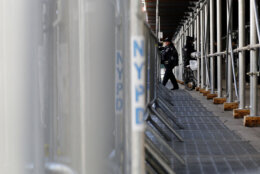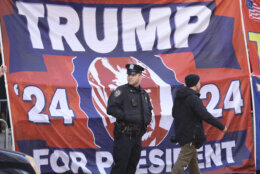Former President Donald Trump pleaded not guilty on Tuesday to 34 felony counts of falsifying business records, according to several news reports. His short arraignment took place in a Manhattan courtroom as prosecutors unsealed a grand jury indictment to the public.
What happened during the Manhattan arraignment and what happens next? WTOP spoke to multiple political reporters that broke down what this criminal case could entail.
‘Remarkable scene’
While the move had been expected for weeks, and cameras tracked every stage of Trump’s move from Mar-a-Lago in Florida to the Manhattan courtroom, Peter Baker, longtime New York Times White House correspondent, said Tuesday’s events were a “remarkable scene.”
He added, “We get lost sometimes in the small details — what exactly does the indictment say? Who’s going to represent him? Where would this go next? What we forget or sometimes obscure is that this is the first time in our history, in more than 200-some years of the American presidency, in which one of our … former leaders, at this point, has been brought before a court and accused of a crime.”
This isn’t the only case Trump potentially faces.
There are also investigations related to his handling of classified material and reported attempts to overturn the 2020 presidential election. Baker said those investigations are “pretty central to our system” of government.
The New York case, on the other hand, “is important, but it doesn’t quite compare to those,” Baker said. “And a lot of people will say, ‘Well, it’s just tawdry. It’s just about sex. It’s not that big a deal.'”
He said it remains to be seen whether any of those investigations will pan out into additional legal headaches for the former president.
“The question is, you know, how does this look a year from now?” he said. “Are we going to be talking about a series of crimes or is this the only thing that the former president is going to be defending against?”
What happens next in this case?
Josh Gerstein, senior legal affairs reporter at Politico, said that Manhattan District Attorney Alvin Bragg could face many issues in the case as he charges the former president with breaking campaign finance laws.
“There are a number of different possibilities here that could be raised. And I think one that could wind up very serious but may not be resolved until time of a trial is: Do they have to show that Trump knew what he was doing was against the law?” Gerstein asked. “And if so, how are they going to show that?”
Another complication could be scheduling the upcoming trials.
“Two different civil cases involving the former president are set for trial later this month and in October of this year. And of course, he is running for the 2024 presidential election, which creates a rather complicated schedule,” Gerstein said.
Why wasn’t the arraignment broadcast?
While there are photos of Trump in the courtroom sitting alongside his lawyers, the actual moment was not broadcast live to the public.
A New York Supreme Court judge rejected a request from several media organizations to allow the historic arraignment to be broadcast.
Beyond security concerns, Washington Post media reporter Paul Farhi said the judge had many reasons for not allowing any recording of the courtroom beyond five still-camera photographers who were allowed in before the arraignment.
“He said he wasn’t going to allow any cameras in the courtroom, because he didn’t want to create the kind of circuslike atmosphere that might jeopardize a fair trial,” Farhi said. “And he also referenced that it might be against the dignity and decorum of the court. I’m not sure what that meant, but that’s what he said.”
Farhi also said this led to conflicting reports coming out of the courtroom.
“We’re talking about secondhand witnesses to all of these events. It’s a rather derivative way to record and understand an event of this magnitude,” Farhi reflected.
“But this is the way this judge decided to do it.”
‘The warning shot from the judge’
Trump, stone-faced and silent as he entered and exited the Manhattan courtroom, said “not guilty” in a firm voice while facing Judge Juan Merchan, who warned him to refrain from rhetoric that could inflame or cause civil unrest.
Catherine Herridge, a senior investigative correspondent at CBS News, said “it’s not clear at this point how vocal the former president will be able to be on social media.”
She added that the judge may have been sending the former president a warning by only admonishing him instead of placing a formal gag order.
“The admonition from the judge should certainly play into the former president’s comments this evening,” she added, referring to a speech by Trump planned for Tuesday evening.
“But if anything can be said about Donald Trump, he is unpredictable and a disrupter, so we could look for more of that this evening.”
The Associated Press and WTOP’s Jack Moore contributed to this report.
















